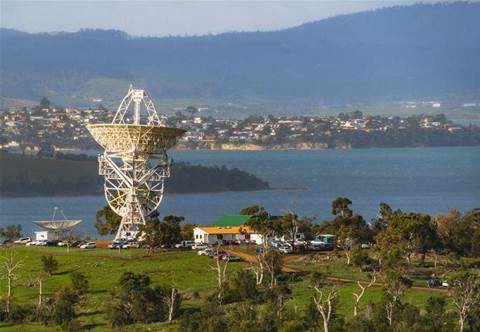
Tasmania Uni ramps up space tracking capability
Partners with European Space Agency.
by Matt JohnstonThe University of Tasmania is preparing to play a greater role in the exploration and use of space with upgrades to its optical observatory.
The university is set to augment its space tracking capabilities thanks to a funding agreement with the Australian Space Agency that was formalised in November last year.
Part of the new capability will be established with the installation of two antennae at the university’s Greenhill Observatory, 70km north of Hobart at Bisdee Tier.
A 7m antenna will provide support for a broad range of satellites and operations from the observatory, while a second dish between two and three metres in size will support Australian-made nanosatellites.
Nanosatellites, often in the form of small, modular “cubesats” about the size of a loaf of bread, are used by academics and industry to monitor space, the environment and Earth’s upper atmosphere due to the relatively low cost of production and launch of such small devices.
Professor Simon Ellingson, acting Dean of the School of Natural Sciences, said the university expects to announce the contract with the antennae manufacturer “within a matter of weeks”.
"The schedule of installation is uncertain with the current COVID-19 lockdown, but we expect to install the antennae later this year."
The Greenhill Observatory houses a 1.3 metre optical telescope whose original primary mirror is currently being replaced after an optical flaw was discovered that prevented it from being used to its full sensitivity.
Despite the setback, the Greenhill Observatory has contributed to studies of Pluto's atmosphere and the discovery of Earth-like planets orbiting other stars since being commissioned in 2013.
Greenhill is one of five observatories run by the university, the others being radio telescopes at Cambridge, Ceduna in South Australia, Yarragadee in Western Australia, and Katherine in Northern Territory.
With Greenhill’s new mirror and augmented antenna array, the university is set to support the European Space Agency’s Jupiter Icy Moons Explorer (JUICE) mission scheduled for mid-2022.
Researchers at the university led by Dr Guifré Molera Calvés are already in the process of of crunching the data from a joint exercise with the European VLNI network of telescopes in February that tracked the position of NASA’s Mars Insight lander.
The observations aimed to determine the measurements of the red planet's rotation and nutation (variation in the tilt of its axis), and to study the liquid content of its core.